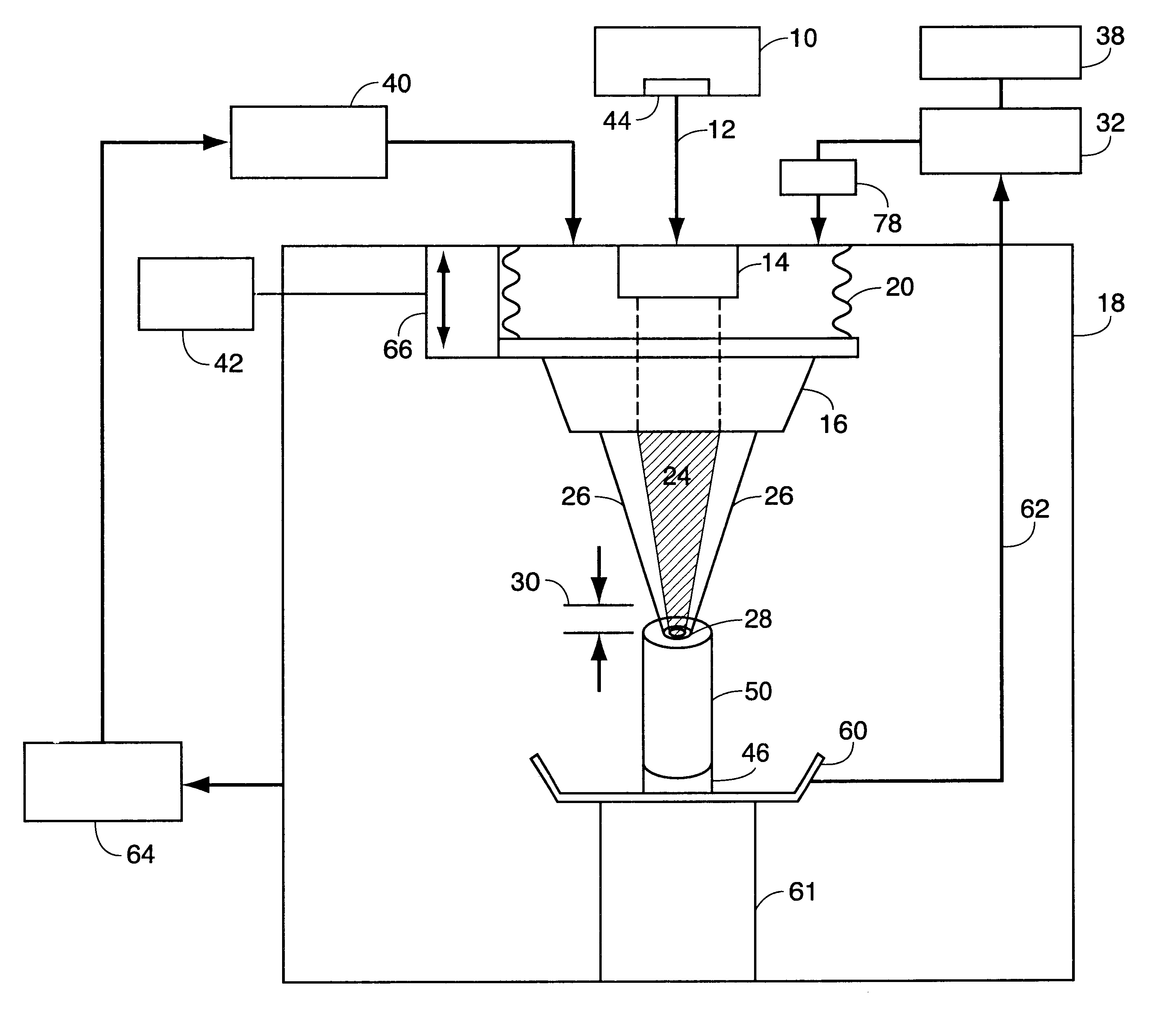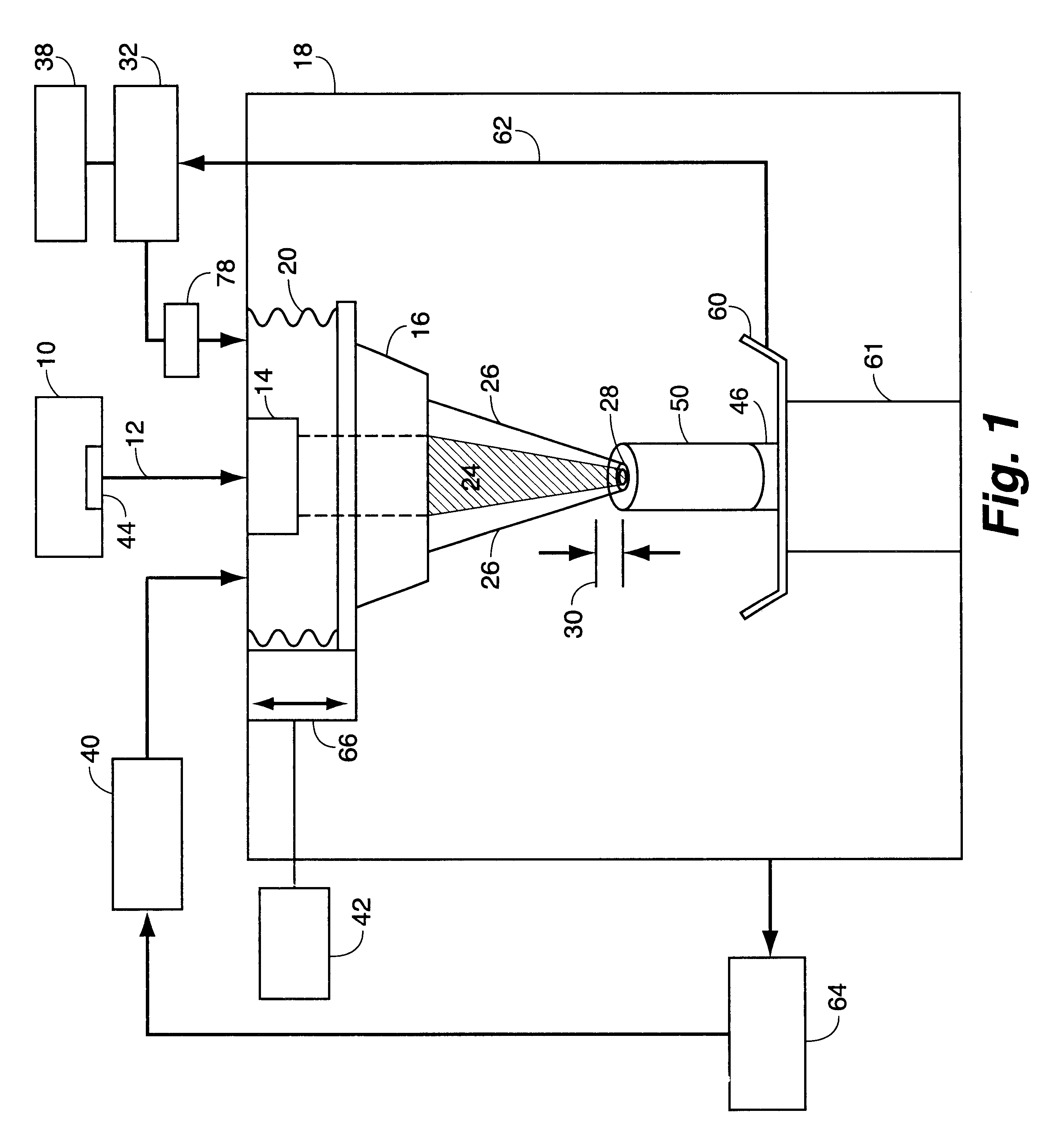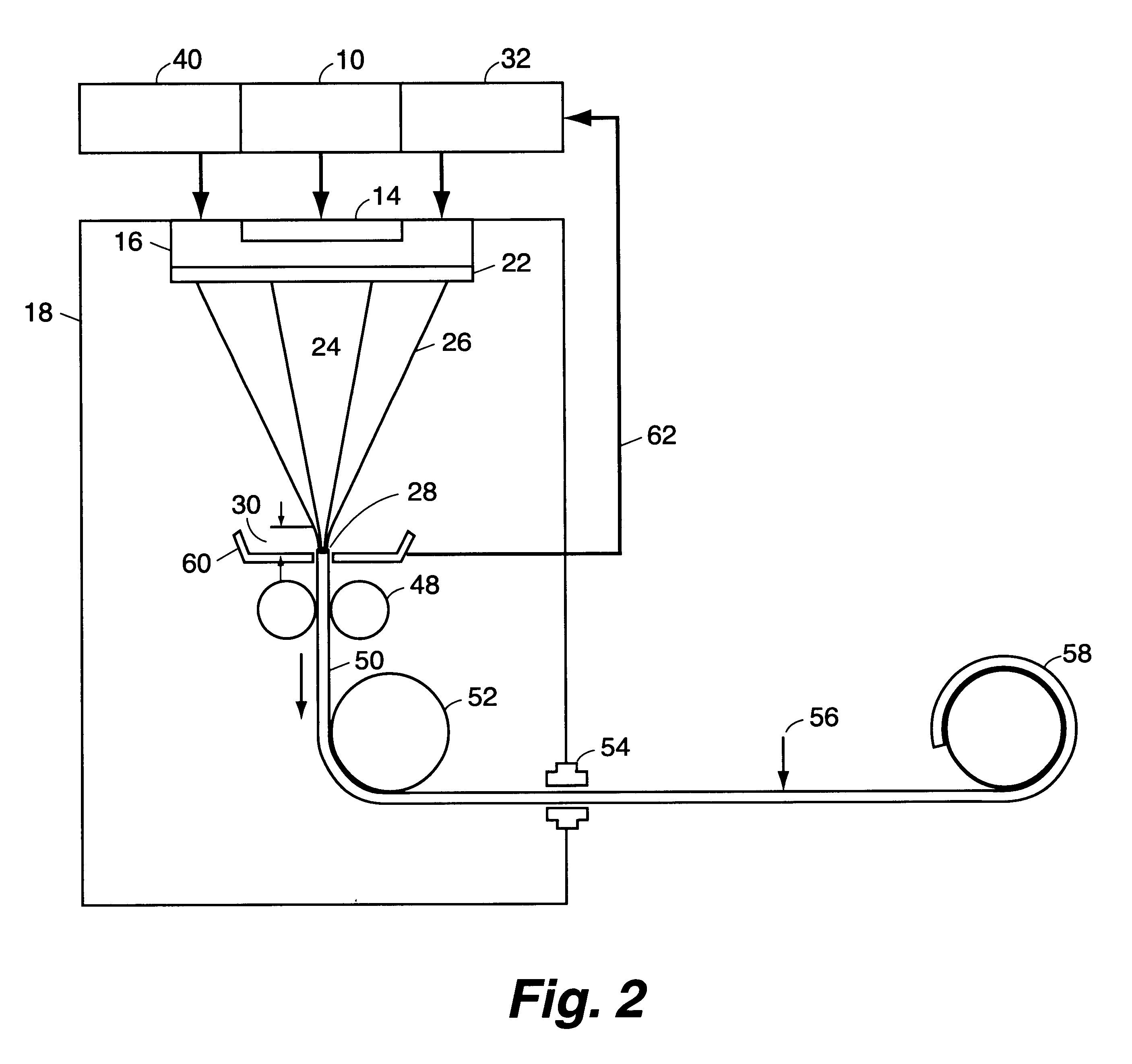Controlled laser production of elongated articles from particulates
a technology of laser production and elongated articles, applied in the field of wire making methods, can solve the problems of high cost of wire drawing dies, low ductility materials that cannot be easily deformed by deformation processing, and limited materials from which wire can be made by traditional multi-step processes
- Summary
- Abstract
- Description
- Claims
- Application Information
AI Technical Summary
Problems solved by technology
Method used
Image
Examples
second embodiment
In the invention another new method of continuously processing wire is described. Unlike conventional continuous casting which relies on crucibles, rolls and molds to confine and shape the melt, the invention process can be used to manufacture wire in a single continuous step.
This continuous processing embodiment of the invention method can be a containerless process achieving melting and forming of wire without contacting other materials during formation of the wire. The wire is formed and cooled prior to spooling, cutting or packaging into lengths or spool sizes as desired.
An example of simplified continuous processing method in accordance with the invention, shown in FIG. 2, uses a fixed laser beam 24 (without fiber optic delivery), a single axis of motion (z) without computerized numerical control, an inert but lower purity inert atmosphere containment chamber 18 and a feed through seal 54 for removal of formed wire.
With reference to FIG. 2, a laser 10 is positioned to focus thr...
example i
A set of runs was made using the invention process to make fifty titanium / aluminum alloy wires in a range of diameters from 0.050" to 0.150".
Equipment was set up as diagrammed in FIG. 1 and described in the specification hereof.
A Lumonics.TM. two-kilowatt continuous wave Nd:YAG laser, commercially available from Lumonics in Livonia, Mich. was used to generate the 1.06 micron wave length laser energy. The laser beam was focused co-axially with a stream of -180 to +325 mesh particle size spherical powder commercially available from Crucible Research in Oakdale, Pa.
The laser beam melted the powder and provided a focused laser spot, accurate enough to form small wires.
Deposition of the parts was achieved by using 122 watt laser power, 4 to 16 inches per minute travel speed, a powder feed of 7 to 15 grams per minute, and 3.44 standard liters per minute of argon gas. Atmosphere purity in the containment chamber was maintained at 50 ppm oxygen and water.
Although a much simpler controller c...
example ii
In this example, a single axis of motion was used to fuse pure tungsten into large diameter wire. Equipment was set up as depicted in FIG. 1, in the manner described in Example I.
A pulsed Nd:YAG laser (Lumonics.TM. 701) was used along with an Anorad.TM. II motion controller to achieve semi-automatic process control. Commands were entered manually into the laser and motion system as well as manual operation of the gas and powder flow control.
The atmosphere purity used for this example was 5 ppm oxygen and water.
The support structure used to begin wire deposition was a metal plate from which wires were cut off after growth.
Wires were grown using 100 watts of power at a speed of 5 inches per minute and a powder feed rate of 5 grams / minute. Spherical tungsten powder was used in a size range from 5 microns to 50 microns.
The samples produced in this example were subjected to simple bending of greater than 90.degree. to demonstrate the ductility of the soft annealed microstructure of the t...
PUM
| Property | Measurement | Unit |
|---|---|---|
| particle sizes | aaaaa | aaaaa |
| particle sizes | aaaaa | aaaaa |
| diameter | aaaaa | aaaaa |
Abstract
Description
Claims
Application Information
 Login to View More
Login to View More - R&D
- Intellectual Property
- Life Sciences
- Materials
- Tech Scout
- Unparalleled Data Quality
- Higher Quality Content
- 60% Fewer Hallucinations
Browse by: Latest US Patents, China's latest patents, Technical Efficacy Thesaurus, Application Domain, Technology Topic, Popular Technical Reports.
© 2025 PatSnap. All rights reserved.Legal|Privacy policy|Modern Slavery Act Transparency Statement|Sitemap|About US| Contact US: help@patsnap.com



